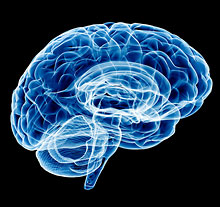Journal Digest: Electrical Brain Stimulation and OC; Postpartum Depression Scale; Antidepressants and Sciatica Pain; Vitamin D and ADHD Risk in Children; Cannabidiol and Cocaine Relapse; Gender Differences and Suicide Attempt
Electrical Brain Stimulation May Reduce Obsessive-Compulsive Behaviors

Non-invasive electrical stimulation personalized to an individual’s brainwave frequency may reduce obsessive-compulsive behaviors, according to a study published in Nature Medicine.
Previous studies have suggested that obsessive-compulsive behaviors are associated with maladaptive reward processing, essentially normalizing repetitive habits. Researchers at Boston University and colleagues tested whether applying transcranial alternating current stimulation (tACS) to the orbitofrontal cortex (a region involved in learning reward and punishment) might be a therapeutic strategy.
The researchers first assigned 60 healthy adult volunteers to receive either sham electrical stimulation, tACS given at 10 Hz, or tACS personalized to a person’s brainwave patterns during reward learning (identified using EEG readings). The participants then played a game involving a chance of monetary rewards three times, with the second session played while they received their designated stimulation. The researchers found that personalized tACS, but not the other two stimulations, influenced participants’ choices when rewards were involved; brain stimulation did not influence decisions involving punishment (for example, loss of money).
Next, the researchers enrolled 64 adults with varying degrees of obsessive-compulsive behaviors (assessed with the Obsessive–Compulsive Inventory-Revised, or OCI-R) and randomly assigned them to 30 minutes of personalized tACS or standard 10 Hz tACS for five consecutive days. At three-month follow-up visits, OCI-R scores in adults who received personalized tACS fell by about 28%, whereas the control group exhibited no changes in OCI-R scores. Individuals who had higher OCI-R scores at baseline had greater average improvements, suggesting this stimulation could have clinical potential.
Grover S, Nguyen JA, Viswanathan V, Reinhart RMG. High-Frequency Neuromodulation Improves Obsessive-Compulsive Behavior. Nat Med. 2021;27(2):232-238.
Postpartum Depression Scale Also Reliable for Perinatal Depression

The Edinburgh Postnatal Depression Scale (EPDS) is considered a gold-standard tool for screening for postpartum depression. A study appearing in Acta Obstetricia et Gynecologica Scandinavica reports that the EPDS can also identify depression or other mental disorders during the early stages of pregnancy.
Investigators at Linköping University in Sweden assessed data from 2,271 pregnant women attending the city’s antenatal care clinic who completed the 10-item EPDS during their first trimester. Of these more than 2,200 women, 149 screened positive for depression (EPDS score of 13 or higher) and were referred to a mental health specialist for further evaluation. The investigators compared these women with 150 women of similar ages who screened negative on the EPDS as a control group.
Of the women who screened positive for depression on the EPDS, 54 (36%) were diagnosed with depression by the specialist, while another 72 (48%) had another mental disorder (such as anxiety) or a significant risk factor for a mental disorder (such as severe fear of childbirth). Among the 150 matched controls who screened negative on the EPDS, only three were subsequently diagnosed with depression during pregnancy, as identified by a subsequent review of medical records.
“This study shows that the EPDS might be a helpful tool for the midwife or other caregivers in antenatal settings for identifying women in early pregnancy who are suffering from different types of mental disorders or risk factors for mental disorders,” the investigators wrote.
Lilliecreutz C, Josefsson A, Mohammed H, et al. Mental Disorders and Risk Factors Among Pregnant Women With Depressive Symptoms in Sweden-A Case-Control Study. Acta Obstet Gynecol Scand. January 20, 2021. [Online ahead of print]
Antidepressants May Benefit Sciatica Pain, But Limited Effects Otherwise

Antidepressants, many of which have anti-inflammatory properties, are frequently prescribed to people with pain symptoms. A meta-analysis appearing in the BMJ now suggests that antidepressants likely do not provide clinically significant relief to people with back pain but might have some meaningful benefits for pain in the buttocks or knees.
Researchers at the University of Sydney in Australia compiled data from 33 clinical trials that compared outcomes among patients who received antidepressants or placebo for pain; 19 studies included patients with back pain, six involved patients with sciatica (pain through the buttock/gluteal region), and eight involved patients with osteoarthritis in their knees. Serotonin norepinephrine reuptake inhibitors (SNRIs) and tricyclic antidepressants (TCAs) were the active agents in 29 of the 33 studies.
The combined analysis suggested that TCAs were ineffective for back pain while SNRIs were marginally better than placebo (reducing pain by about five extra points on a 100-point pain scale after three months). SNRIs had a slightly stronger effect on osteoarthritis pain after three months, reducing pain by about 10 more points than placebo. TCAs were not assessed for osteoarthritis pain.
For sciatica, SNRIs showed strong superiority over placebo in the short term (19 points better than placebo in the first two weeks) but no superiority at three months; conversely, TCAs were not better than placebo in the first two weeks, but about 16 points better than placebo at three months. The researchers cautioned, however, that the sciatica studies were based on more limited data, so the confidence in the results was low.
Ferreira GE, McLachlan AJ, Lin CC, et al. Efficacy and Safety of Antidepressants for the Treatment of Back Pain and Osteoarthritis: Systematic Review and Meta-Analysis. BMJ. 2021; 372:m4825.
Vitamin D Deficiency in Early Pregnancy Associated With ADHD Risk in Children

Children born to women who had low levels of vitamin D during the first trimester of pregnancy may be at elevated risk of developing attention-deficit/hyperactivity disorder (ADHD).
Previous studies examining an association between vitamin D deficiency during pregnancy and ADHD have produced conflicting results, but investigators have primarily compared vitamin D levels of mothers during later stages of pregnancy.
For this study, researchers at the University of Turku in Finland used national health registry data to compare first-trimester vitamin D levels from 1,067 mothers of children with ADHD (all born in 1998 or 1999) and 1,067 matched mothers of children without ADHD. In both sets of mothers the average date of the blood draw was between the 10th and 11th week of gestation.
The mothers were divided into three clinical categories based on their vitamin D blood concentration: vitamin D deficient (< 30 nmol/L), vitamin D insufficient (30 -49.9 nmol/L), and vitamin D sufficient (50 nmol/L amd up). Compared with women who were vitamin D sufficient, those who were vitamin D deficient (which comprised nearly half the sample) were 1.34 times as likely to have a child with ADHD, after adjusting for other contributing factors.
“Despite the marked reduction in the prevalence of many nutritional deficiencies in the developed world, vitamin D deficiency still remains common, and therefore the present study could have significant public health implications,” the researchers noted.
This study was published in Journal of the American Academy of Child and Adolescent Psychiatry.
Sucksdorff M, Brown AS, Chudal R, et al. Maternal Vitamin D Levels and the Risk of Offspring Attention-Deficit/Hyperactivity Disorder. J Am Acad Child Adolesc Psychiatry. 2021; 60(1):142-151.e2.
Cannabidiol Does Not Reduce Cocaine Cravings or Relapse Risk

Cannabidiol does not appear to reduce the risk of cocaine cravings or relapse in people being treated for cocaine use disorder, according to a study in Addiction.
Researchers at the University of Montreal and colleagues conducted a clinical trial of 78 adults diagnosed with cocaine use disorder. Forty participants were randomly assigned to receive up to 800 mg oral cannabidiol daily while the other 38 received a placebo solution.
For the first 10 days, all the participants were admitted to an inpatient treatment center for detoxification, where they were invited to participate in group therapy sessions. After discharge, the participants continued the study for 12 additional weeks. During the outpatient phase, the participants went to the clinic weekly to receive their study medication and provide blood and urine samples. They also had the option of attending a weekly counseling session. Sixty-two participants successfully completed the 10-day detoxification, and 50 completed the 12-week outpatient phase.
The researchers found that cannabidiol was not superior to placebo at reducing cocaine cravings, which were assessed at day 8 of the detoxification phase. Cannabidiol also did not reduce relapse rates during the outpatient phase; after 12 weeks only one adult taking cannabidiol and two adults taking placebo did not relapse.
“As opposed to other substance use disorders such as alcohol, opioids, and nicotine, research endeavors have proven relatively disappointing in developing efficacious pharmacological intervention for people with CUD,” the researchers wrote. “More than ever, there is a crucial need to identify new pharmacological and psychosocial interventions for the treatment of [cocaine use disorder].”
Mongeau-Pérusse V, Brissette S, Bruneau J, et al. Cannabidiol as a Treatment for Craving and Relapse in Individuals with Cocaine Use Disorder: A Randomized Placebo-Controlled Trial. Addiction. January 19, 2021. [Online ahead of print]
Recovery Needs Differ Between Men, Women After Suicide Attempt

Researchers at Oregon Health & Science University and colleagues have identified some key differences in what men and women need or prioritize while in recovery from a suicide attempt. These findings, published in Medical Care, may help therapists develop gender-relevant treatment approaches to patients who have attempted suicide, which is one of the strongest predictors of a future suicide attempt.
The researchers conducted telephone interviews with 50 veterans (25 male and 25 female) across the country who had a suicide attempt in the previous six months. The participants were identified using the Veterans Health Administration’s National Patient Care Database and comprised a demographically, geographically, and clinically diverse group.
Men and women both expressed a desire for a stronger sense of purpose in their lives. Both groups also noted the importance of developing relationships with others; women prioritized a desire to develop more mutually supportive connections whereas men expressed a desire to feel needed or be held accountable. Women were more likely than men to express a desire to increase their self-awareness (why they do, think, or feel the things they do).
Based on the interview analysis, the researchers suggested women recovering from a suicide attempt might benefit from psychoeducational therapies in a group setting, which would help them make connections and better understand their behavior. Men, meanwhile, would benefit from more goal-oriented approaches to encourage accountability. ■
Denneson LM, Tompkins KJ, McDonald KL, et al. Gender Differences in Recovery Needs After a Suicide Attempt: A National Qualitative Study of US Military Veterans. Med Care. 2021; 59: S65-S69.



